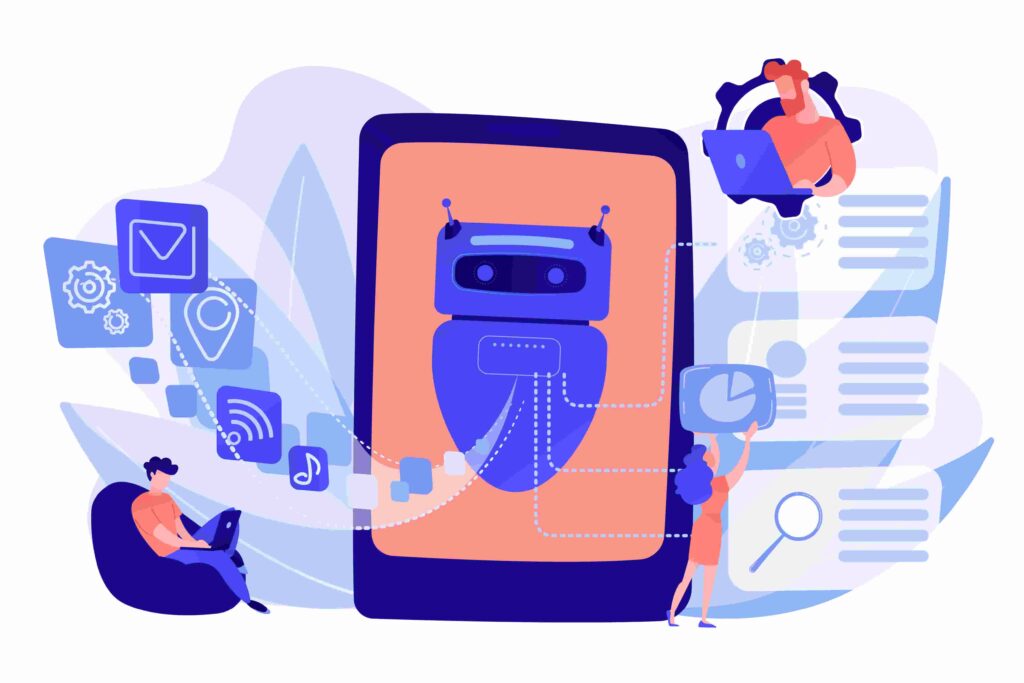Strategies using an omnichannel platform are on the rise. An omnichannel platform is not just for large companies and brands worth billions of dollars, as customers around the world expect to receive a complete service experience.
Creating a website and offering a standard service to customers are no longer enough. Today, if your company doesn’t offer an exceptional customer service, it won’t remain competitive. In this article, you’ll learn about omnichannel platform, including the following:
- What is an omnichannel platform?
- Why is it so important?
- How to optimize your company’s customer service with an omnichannel platform?
What is an omnichannel platform?
Omnichannel service means meeting customer needs across all touchpoints and providing the same functionalities and experience across all channels available for buyers and users to interact with your company.
Companies must be mindful of every step of the customer journey: discovery, search, conversion, support, customer service, and feedback. Also, they should focus on building ongoing relationship to encourage new purchases.
In short, an omnichannel strategy refers to providing excellent service across all customer touchpoints, including:
- physical stores;
- telephone;
- website;
- online marketplaces;
- mobile app;
- mobile messaging, chats, and push notification;
- social media;
- email.
An omnichannel platform, such as Milvus, offers easy communication through a variety of touchpoints in just one place.
In other words, your company can manage all these touchpoints in a single system, ensuring a more dynamic and agile process and making the entire customer experience an uncomplicated and personalized journey.
Considering these benefits, it is clear why offering an omnichannel service is so important. See below some more advantages for your company.
Why is an omnichannel platform so important?
With an omnichannel platform strategy, customer service channels are not only parallel, they’re synchronized. Your company can guide the customer journey more effectively by preventively overcoming customer objections. The main advantages are:
- higher service efficiency, as you will be able to manage all your company’s channels in one place, with a broader view of everything;
- improved productivity, as automation makes it unnecessary to change channels to receive customer contact;
- more integrated communication; after all, it’s a synchronized standard model;
- accurate monitoring of metrics with data provided by the tools.
Also, when people are ready to convert, the omnichannel strategy allows them to do so on whatever platform they are currently using. This convenience prevents the customer from losing interest or being caught by a competitor.
A cross-channel system containing data integration, automation, and communication allows companies to re-engage customers through different channels, such as:
- email;
- messaging;
- push notification;
- website pop-ups.
Then, it can remind customers of products left in the cart or show again products they’ve recently viewed, for example.
Another important aspect is that people can continue viewing from where they left off, even if it’s on another channel. It makes the buying process seamless and is one of the most significant benefits of omnichannel strategies versus other approaches.
How to optimize your company’s customer service with an omnichannel platform?
If your company doesn’t have this type of multifunctionality yet, you may be wondering how to implement it in your business; after all, you can have countless benefits from optimized and well-controlled processes.
To obtain all these benefits, see below which steps your company needs to adopt:
Map the customer journey
Understanding the path a customer takes from the first contact and learning about a product or service and how a customer has become loyal represents critical information to creating an effective omnichannel communication strategy.
Determine strengths and weaknesses of every channel
Each communication channel has strengths and weaknesses, depending on what the customer wants to do. For example, using an app can be more convenient for a quick purchase, but it might not offer a customer service.
So find out which improvements can be made to every communication channel.
Select an omnichannel platform
Choosing the best tool available in the market is important to ensure the strategy will be supported and that it will work as desired. Select a solution that offers at least the seven main types of contact below:
- call via email;
- customer service chat;
- web call;
- call via app;
- telephone call;
- monitored devices;
- call via WhatsApp or another messaging app.
Having a secure app like Milvus means making sure that your customers will be well served whenever they need it.
Learn about the features of Milvus, the largest omnichannel service platform in Brazil, and understand how your business can be optimized through this system!






